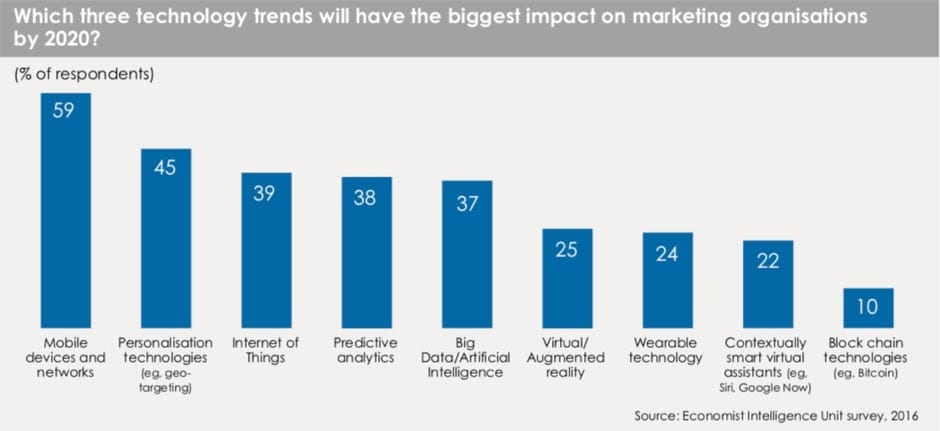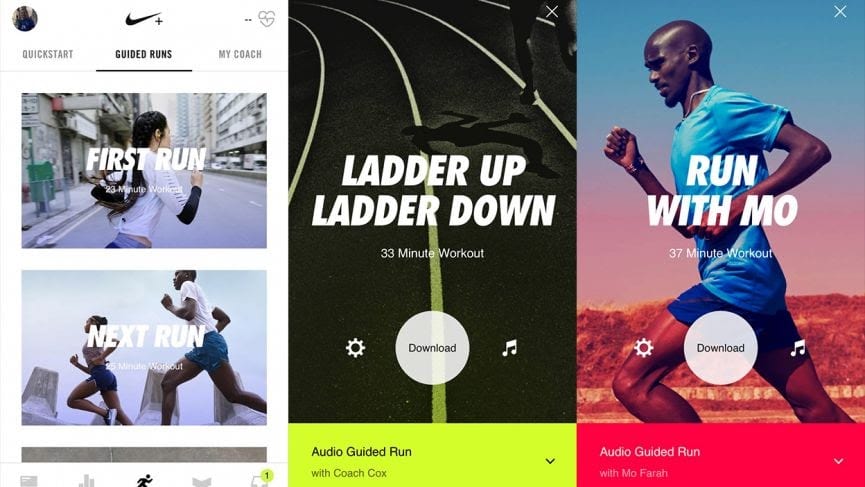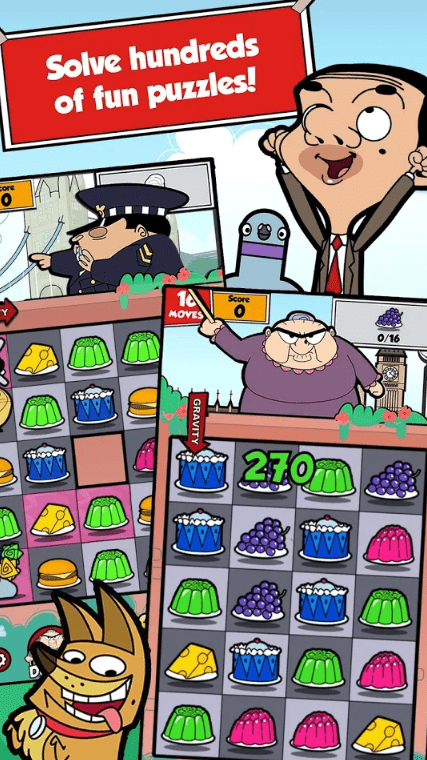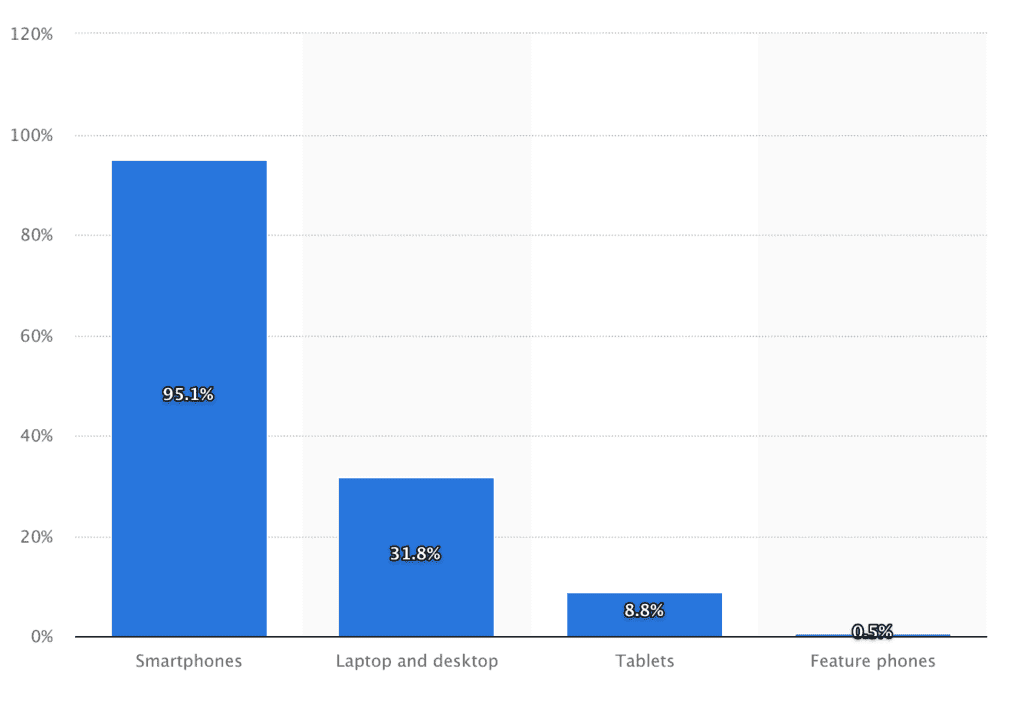What Are The Different Types of Mobile Marketing?
Mobile marketing can propel your marketing to the next level, but where do you start? Learn more about the different types of mobile marketing in this article.

Mobile marketing can propel your marketing to the next level, but where do you start? Learn more about the different types of mobile marketing in this article.

In the last eight years or so, most “predicting the future of marketing” blogs made mention of mobile marketing. A majority of these blogs made the indisputable argument that your website needed to be mobile-friendly, or else you risked falling off the SEO version of a cliff-edge.

Others–like the Harvard Business Review in 2013–advised you to direct your marketing budget toward the thriving world of apps. This advice led to thousands of branded apps that benefited no one but the company behind them. (Your customers don’t want hundreds of apps cluttering their phone.)
Against the backdrop of all the different and–retrospectively–fascinating hot takes on mobile marketing, mobile traffic reached around 50% of global web traffic at the beginning of 2017. We recently wrote about how text messaging can impact your mobile sales and noted that Q1 of 2019 was the first quarter ever where mobile orders were a majority of all e-commerce orders.
It seems like the thing all of us marketers predicted would happen, has happened: A majority of customers are now using their mobile devices to discover and purchase products. That means that it’s no longer enough to think about your mobile marketing strategy.
If your mobile marketing efforts focus solely on making your website mobile-friendly, then it’s time to broaden your mobile initiatives. So, with that in mind, here are six different types of mobile marketing you should consider either expanding upon or integrating into your broader digital marketing strategy.
To paraphrase Feris Bueller, “Marketing moves pretty fast…”

In this article, we cover the following different types of mobile marketing:
We started this article by throwing some shade at mobile apps.
The reason is that a lot of businesses build apps that provide little or no value to customers. These apps end up replicating functionality already offered by the brand’s website or by other apps, and then only drive adoption by providing some initial discount or perk. Of course, once a customer accesses the reward, they delete the app and never think about it again.
Something is annoying about the entire experience. It creates a ton of friction for the consumer and seems like a gigantic waste of time and marketing resources for the brand. Still, given that there are 2.8 million apps available for download on the Google Play Store, they aren’t all pointless.
One example of an excellent branded app is the Nike+ Run Club. Nike+ Run Club offers valuable tools to help runners, including GPS run tracking, audio-guided runs, weekly, monthly and custom distance challenges, and customized coaching plans for your goals. The best part is that it’s free.

The app offers a ton of value to its users, and you don’t feel like you are the subject of an aggressive marketing campaign. Nike is a global giant, but it doesn’t mean you can’t take the essence of their app strategy and use it to guide the development of your own.
The key takeaway here is that it’s all about providing your audience with value.
A mobile push notification is a message sent by an application to a customer’s mobile device. You can send push notifications to customers who have installed your mobile app and opted-in to receive messages.
Push notifications are like text messages, but they come from an app. When they first came out, they were solely text–and sometimes emojis. Now though, rich push notifications let mobile marketers include text as well as images, video, and sound.
Mobile push notifications are routinely used by brands to deliver product updates, reminders personalized offers, news, and other information that’s critical to the functionality of the app and requires attention from the app’s user. Duolingo does an excellent job here of sending a location-specific push notification.

Thirteen years on since the launch of the first iPhone, there are roughly 2 billion people who spend their time playing casual games. If you’re ever on transit in a large city during rush hour, you can observe both the suited investment banker and 12-year-old school kid concentrating intensely on a game of Candy Crush.
Such is the universal appeal of playing casual mobile games. Branded mobile games offer you an opportunity to engage with customers while they do something that is both fun and addictive. Plus, people only access a mobile game when they want to.
One great example is “Play London with Mr. Bean,” an interactive mobile game with geo-location features, starring an animated Mr. Bean character visiting tourist attractions in central and outer London.

You are probably already running mobile ads, but this year you should focus more of your efforts on creating mobile-first ad campaigns.
Mobile surpassed desktop platforms in paid search for the first time with a 48% share of spending in Q2 2018, compared to 44% for desktop and 8% for tablets. Plus, mobile represents 80% of social media spend.

Social media is a great place to start thinking mobile first, as platforms like Instagram and Facebook already cater predominantly to mobile ad formats. This goes without saying for Instagram, but as you can see from this data on devise usage of Facebook users worldwide, nearly everyone using Facebook is also accessing it from their mobile devices.
It’s worth noting here that if your ads drive traffic to your website, then you should pay attention to mobile visitor behavior. You can track how your mobile visitors convert versus your desktop visitors and tweak accordingly. You don’t want to waste ad dollars driving traffic to a landing page that isn’t working the way it should on mobile.
We called it: QR Codes are officially making a comeback this year. Large companies such as Nike and Amazon are jumping on the QR Code bandwagon, using the technology to teach customers more about the products they offer.
When we think of QR codes, we think back to the early days of smartphones. You’d see these black and white squares virtually everywhere – but then they started to disappear. There were a host of issues with the first wave of QR codes, slow smartphone internet speed for one, coupled with confusion about how to use them. The nail in the coffin was the fact that the iPhone did not support QR code scanning.
As of Apple’s 2017 iOS 11 updates, the iPhone camera can now scan QR codes with no third-party app required. This update opened up possibilities for brands to introduce a slew of new campaigns featuring QR codes in their marketing. Even Gen Z is getting in on the QR code craze with Snapcodes. If you want to add a friend on Snapchat, you can scan their user profile image on the app’s camera and add them instantly.

There are a bunch of different ways to use QR codes. You could use a QR code to direct people to review your business or place a QR code at check out offering an extra gift or discount if they sign up for your newsletter. Estate agents could consider adding a QR code to the For Sale sign: interested buyers can scan the code and immediately access details about that property. Finally, here are five ways that you can incorporate QR codes into your SMS strategy.
When developing a mobile marketing strategy, you don’t want to miss out on one of the most effective mobile channels: text marketing.
Text message marketing is the use of SMS or text messages to deliver promotional messages to customers and subscribers. Text marketing can generate sales, improve brand awareness, and increase website traffic (the CTR of text messages is +400% higher than emails).
Text marketing underuse by businesses is staggering, given that 64% of consumers believing that companies should utilize text messaging more. When you combine customers’ willingness to receive text messages, the amount of time they spend on their cellphones, and SMS open rates of 98%, it’s a no-brainer.
If you are interested in learning more about text marketing, here are a couple of great resources to get you started:
Whether you are an e-commerce retailer or a restaurant owner, mobile marketing can propel your marketing to the next level. As people spend longer and longer on their cellphones, mobile marketing allows you the opportunity to reach your target audience where they already are.
Furthermore, the different types of mobile marketing available to you allow for a high degree of creativity and customization. From mobile games to sending text messages, there are several ways you can grow your business with mobile marketing.
Drew Wilkinson is the Head of Marketing at SimpleTexting. Drew has more than a decade of experience managing successful integrated marketing programs to build brands, raise awareness, and generate demand.
More Posts from Drew WilkinsonWe all routinely receive text messages from five- or six-digit phone numbers. Find out how these numbers work and whether they're right for your business.
ReadLearn how to identify fake text messages and protect yourself from text message scams before it's too late.
ReadStart a text marketing campaign or have a 1-on-1 conversation today. It's risk free. Sign up for a free 14-day trial today to see SimpleTexting in action.
No credit card required